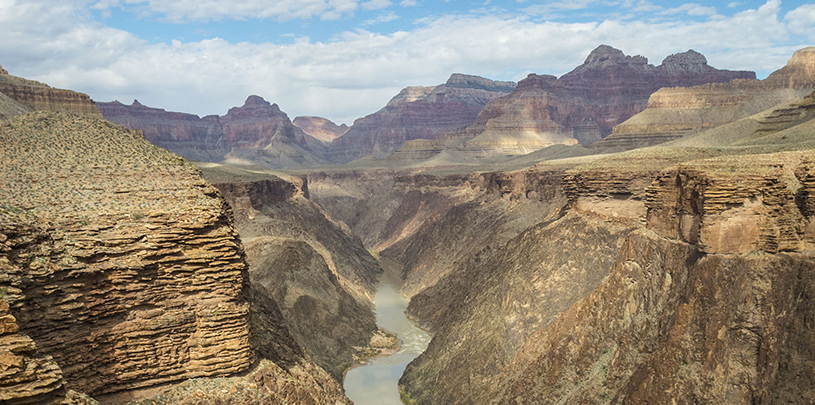
 by Roger Clark, Grand Canyon Director
by Roger Clark, Grand Canyon Director
“Earlier this year,” wrote Mark Udall, “my wife and I were invited to join native leaders on a rafting trip through the Grand Canyon….at nearly every spring along the way, we stopped to pray. All water is sacred to those who have learned to live where it is scarce.”
The former U.S. Senator from Colorado is speaking out with Havasupai, Hopi, Navajo, and Hualapai leaders to protect the Grand Canyon’s sacred waters from uranium mining on public lands that surround the national park.
On Oct. 12, 2015, those tribes joined Arizona Congressman Raúl Grijalva in asking President Obama to use his authority under the Antiquities Act to proclaim a new national monument that would prevent new uranium mines from further polluting aquifers that feed the Grand Canyon’s precious seeps and springs.
The Greater Grand Canyon Heritage National Monument would preserve and restore the Grand Canyon’s heritage of sacred lands and ecosystems on approximately 1.7 million acres of public lands that are integral to Grand Canyon National Park. Grijalva and tribal leaders are seeking a presidential proclamation to protect Grand Canyon’s cultural sovereignty.
At the Oct. 12 announcement, Hopi Tribal Vice Chairman Alfred Lomahquahu, Jr. said that a presidential proclamation under the Antiquities Act would be “huge step for tribal sovereignty and self-determination.” He noted that the Act “was originally enacted to preserve our cultural resources [but] this is the first time that the tribes have been involved in really having a say in those cultural resources.” These resources include the Grand Canyon’s surface tributaries and interconnected aquifers and springs that are sacred to native people throughout the region.
Two days after Vice Chairman Lomahquahu’s remarks, Mark Udall wrote in the New York Times, “Now we must prevail upon the president to permanently protect the Grand Canyon’s sacred waters.”
In response to Udall’s New York Times editorial, the National Mining Association claimed “that mining activity would have no or negligible impact on water sources in the area.” The U.S. Geological Survey disagrees, noting that more mining could “increase the amount of uranium…in the local surface and groundwater flowing into Grand Canyon National Park.”
As President Obama said this summer, "We're blessed with natural treasures—from the Grand Tetons to the Grand Canyon; from lush forests and vast deserts to lakes and rivers teeming with wildlife….[I]t's our responsibility to protect these treasures for future generations, just as previous generations protected them for us."
80% of Arizona voters support Baaj Nwaavjo I'tah Kukveni National Monument, according to a new poll.
Read MoreThe Colorado River below Glen Canyon Dam is heating up. Find out why.
Read MoreGroundwater pumping at a uranium mine near the Grand Canyon will affect the canyon's springs, scientists says.
Read More